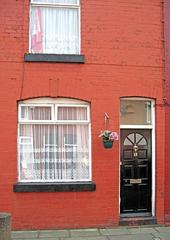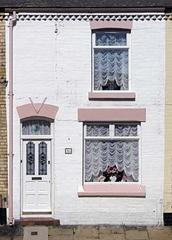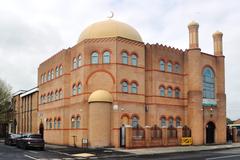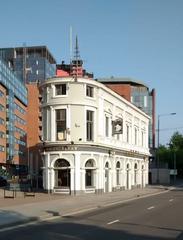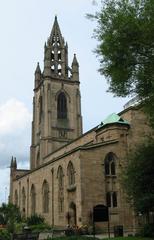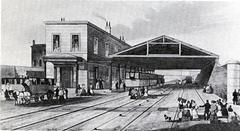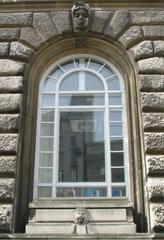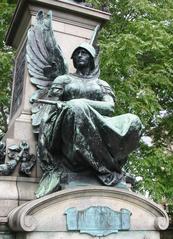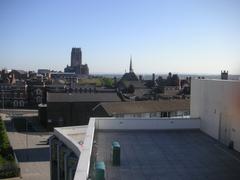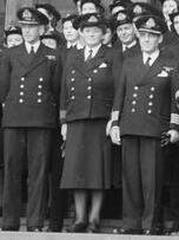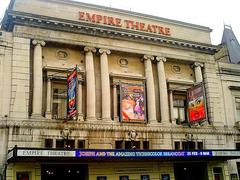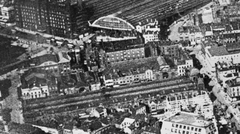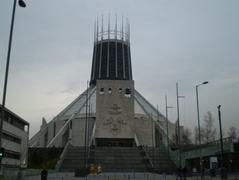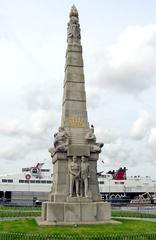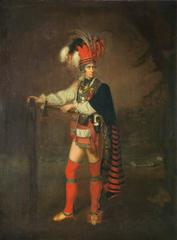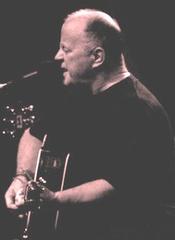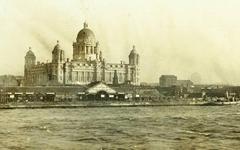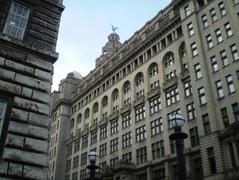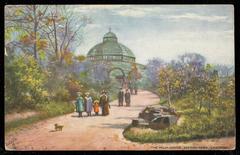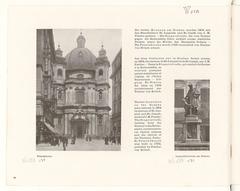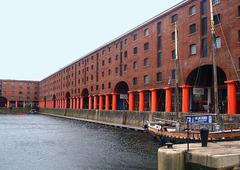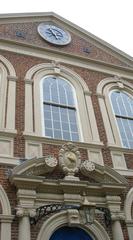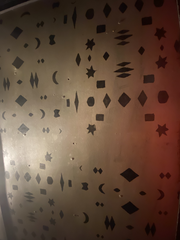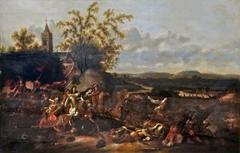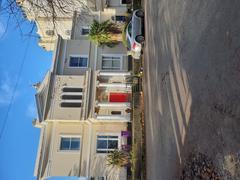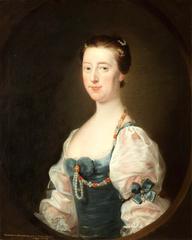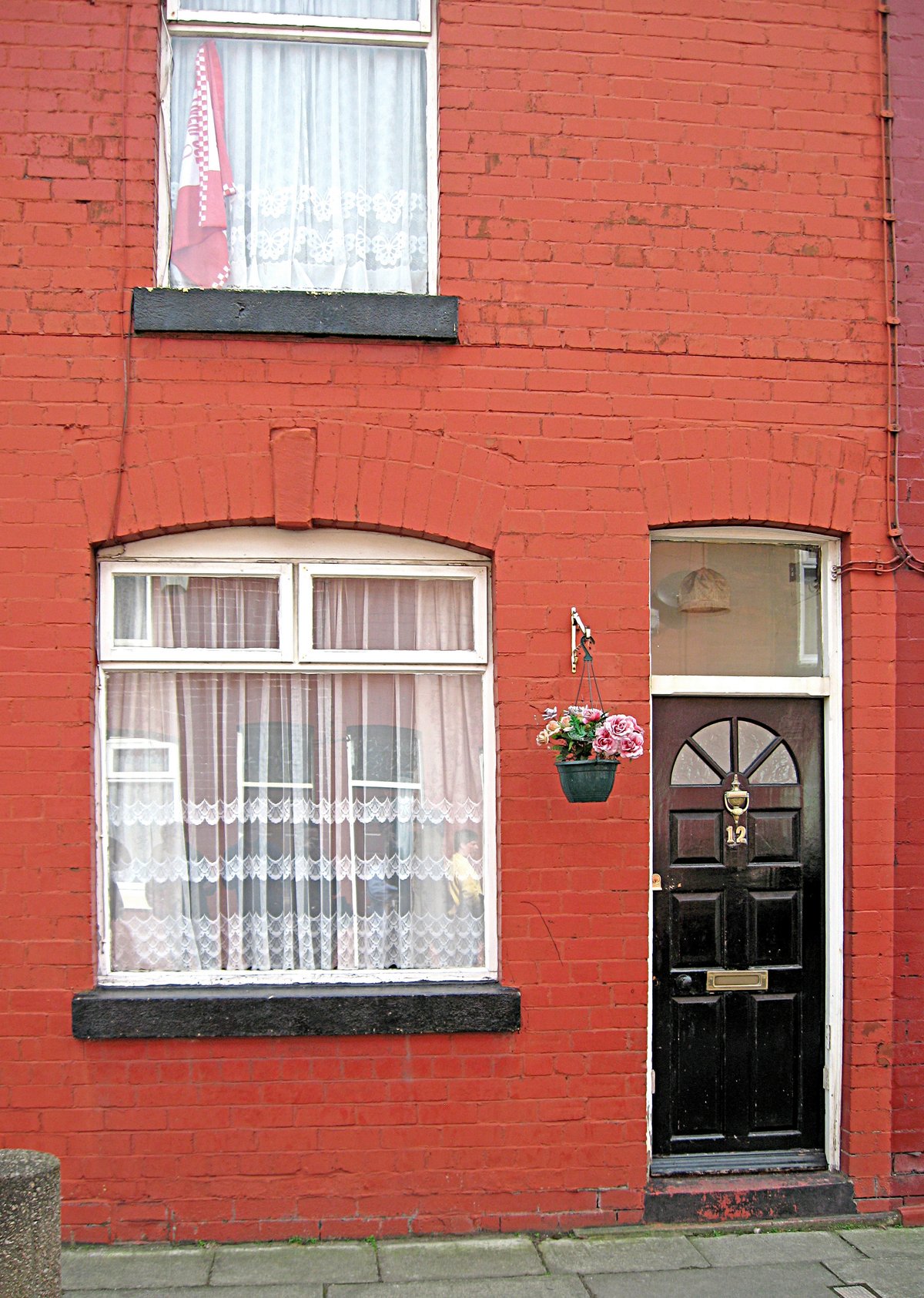
Visiting 12 Arnold Grove, Liverpool: George Harrison’s Birthplace – Tourist Guide, Visiting Hours & Tickets
Date: 14/06/2025
Introduction: The Story and Significance of 12 Arnold Grove
Tucked away in Liverpool’s Wavertree district, 12 Arnold Grove is a modest Victorian terraced house with global cultural resonance. It is famously recognized as the birthplace and childhood home of George Harrison, the legendary lead guitarist of The Beatles. The house, with its classic two-up, two-down design, embodies the working-class roots that shaped not only Harrison’s formative years but also the ethos of The Beatles themselves.
Built in the late 19th or early 20th century, 12 Arnold Grove was home to the Harrison family from 1931 until 1950. George Harrison was born here on February 25, 1943, during the height of World War II. The family’s experiences—marked by wartime hardship and a close-knit community—deeply influenced Harrison’s worldview and artistic sensibilities. Today, the property stands as a pilgrimage site for music fans, officially commemorated with a national blue plaque unveiled in May 2024 by Historic England, affirming its status as a site of outstanding historical and cultural importance.
While the house remains a private residence with no interior access, visitors can appreciate its history from the outside, viewing the blue plaque and soaking up the atmosphere of the neighborhood that helped shape a musical icon. This comprehensive guide provides historical context, practical visitor information, travel tips, and suggestions for nearby Beatles and Liverpool attractions to enrich your experience.
(Kiddle; The Guide Liverpool; Historic England; Beatles Liverpool Locations)
Table of Contents
- History and Significance of 12 Arnold Grove
- Life in Wartime Liverpool
- Social and Cultural Context
- George Harrison’s Early Years
- The Move to Speke and Legacy
- Visiting 12 Arnold Grove
- Getting There & Local Transport
- Nearby Beatles and Liverpool Historical Sites
- Visitor Etiquette & Practical Tips
- FAQs
- References
History and Significance of 12 Arnold Grove
12 Arnold Grove is representative of Liverpool’s working-class housing from the industrial era. Situated near the Picton Clock Tower, it is part of a small cul-de-sac, typical of the area’s modestly built homes. The Harrisons moved in during 1931, with George Harrison being born in the front upstairs bedroom in 1943. The family lived here for nearly two decades, enduring the challenges of wartime Liverpool, including air raids and material shortages, while enjoying the support of a close community.
(Beatles Liverpool Locations; Kiddle)
Life in Wartime Liverpool
During World War II, Liverpool was heavily bombed as a major port city. The area around Arnold Grove was not spared, and the Harrisons experienced the fear and disruption of air raids—on at least one occasion, a sea mine blast shattered the house’s windows. Despite these hardships, the sense of family and neighborhood solidarity remained strong.
(Beatles Liverpool Locations)
Social and Cultural Context
The neighborhood of Arnold Grove was defined by its terraced houses, cobbled streets, and vibrant community life. Local landmarks included the Lamb Hotel, Abbey Cinema, and Picton Clock Tower. The Harrisons’ mixed Catholic-Protestant marriage reflected the city’s religious diversity, and proximity to extended family offered vital support, particularly during wartime.
(Beatles Liverpool Locations)
George Harrison’s Early Years
George Harrison remembered Arnold Grove with affection, describing the warmth and security of family life despite material deprivation. Local “jiggers” (alleyways) allowed him to visit relatives nearby, and the experiences of his early childhood in Liverpool would later inform his music and worldview.
(Kiddle)
The Move to Speke and Legacy
In January 1950, the Harrison family moved to a council estate in Speke, ending their long residence at Arnold Grove. Despite the move, 12 Arnold Grove retained a special place in Harrison’s memory and has since become a focal point for Beatles fans. In 2024, its historical and cultural significance was officially recognized with a national blue plaque.
(BBC News; Historic England)
Visiting 12 Arnold Grove
Visiting Hours and Access
- Exterior Only: 12 Arnold Grove is a private residence; interior access is not permitted.
- When to Visit: The exterior and blue plaque can be viewed from the street at any time, but visiting during daylight hours (9:00 am – 6:00 pm) is recommended for safety and to respect residents.
- Tickets: No tickets or entry fees are required to view the exterior.
Accessibility
- The street is flat and accessible for most visitors, though pavements are narrow.
- There are no on-site facilities; amenities are available nearby on Smithdown Road and Wavertree High Street.
Guided Tours
- Several Beatles-themed guided tours include a stop at Arnold Grove. The Magical Mystery Tour and other local providers feature knowledgeable guides and transport between sites. Advance booking is recommended. (Cavern Club)
Travel Tips
- Use public transport due to limited residential parking.
- Wear comfortable shoes for walking on cobbled or uneven streets.
- Bring weather-appropriate clothing, as Liverpool’s climate is changeable.
Getting to 12 Arnold Grove
By Bus: Take bus 75 or 80 from Queen Square Bus Station towards Wavertree; alight at Smithdown Road near Green Lane.
By Train: Nearest stations are Mossley Hill, Wavertree Technology Park, and Broad Green; each is within walking distance.
By Taxi/Ride-share: Enter “12 Arnold Grove, L15 8HP” as your destination.
By Foot/Bike: The area is pedestrian- and bike-friendly.
Nearby Beatles and Liverpool Historical Sites
- Penny Lane: Immortalized in song, less than 2 km away.
- Strawberry Field: Visitor centre and gardens.
- The Cavern Club: Iconic venue where The Beatles played early gigs.
- John Lennon’s and Paul McCartney’s Childhood Homes: National Trust properties open via guided tours.
- Liverpool Beatles Museum: Extensive memorabilia and exhibits. (Far Out Magazine; Placestovisitinengland.com)
Visitor Etiquette & Practical Tips
- Remain on public pavements; do not approach the house or disturb residents.
- Keep noise to a minimum and limit group size.
- Photography of the exterior and blue plaque is welcome, but respect privacy.
- Take away any litter and avoid leaving tributes on the property. (McCartney Times)
Frequently Asked Questions (FAQ)
Q: Can I enter 12 Arnold Grove?
A: No, it is a private residence. Viewing is exterior only.
Q: Are there guided tours inside the house?
A: No interior tours, but Beatles heritage tours stop outside for photographs and commentary.
Q: Is the house accessible for people with disabilities?
A: The street is flat and accessible, but pavements are narrow.
Q: Are there public amenities at the site?
A: No, but nearby Smithdown Road and Wavertree High Street have cafes, shops, and toilets.
Q: What is the best way to get there?
A: Public transport is recommended due to limited parking.
Summary and Visitor Recommendations
12 Arnold Grove encapsulates the humble origins of George Harrison and stands as a testament to Liverpool’s working-class heritage and its influence on global culture. The 2024 blue plaque, unveiled by Harrison’s widow Olivia, underscores the home’s significance to both the city and the world.
A visit to Arnold Grove is best combined with other Beatles and Liverpool heritage sites, using public transport for convenience. Respectful visitor behavior ensures that this private residence remains a welcoming landmark for Beatles fans and music lovers for years to come.
For enhanced experiences, download the Audiala app for curated Beatles tours and up-to-date event information, and check official tourism resources for the latest guidance.
Official Sources & Further Reading
- Kiddle
- The Guide Liverpool
- Historic England
- Beatles Liverpool Locations
- Liverpool Beatles Museum
- Liverpool Echo
- Evendo
- Far Out Magazine
- Liverpool Express
- BBC News
- Moovit
- Placestovisitinengland.com
- The Crazy Tourist
- McCartney Times
- Visit Liverpool
- Wikipedia
- GPSmyCity
